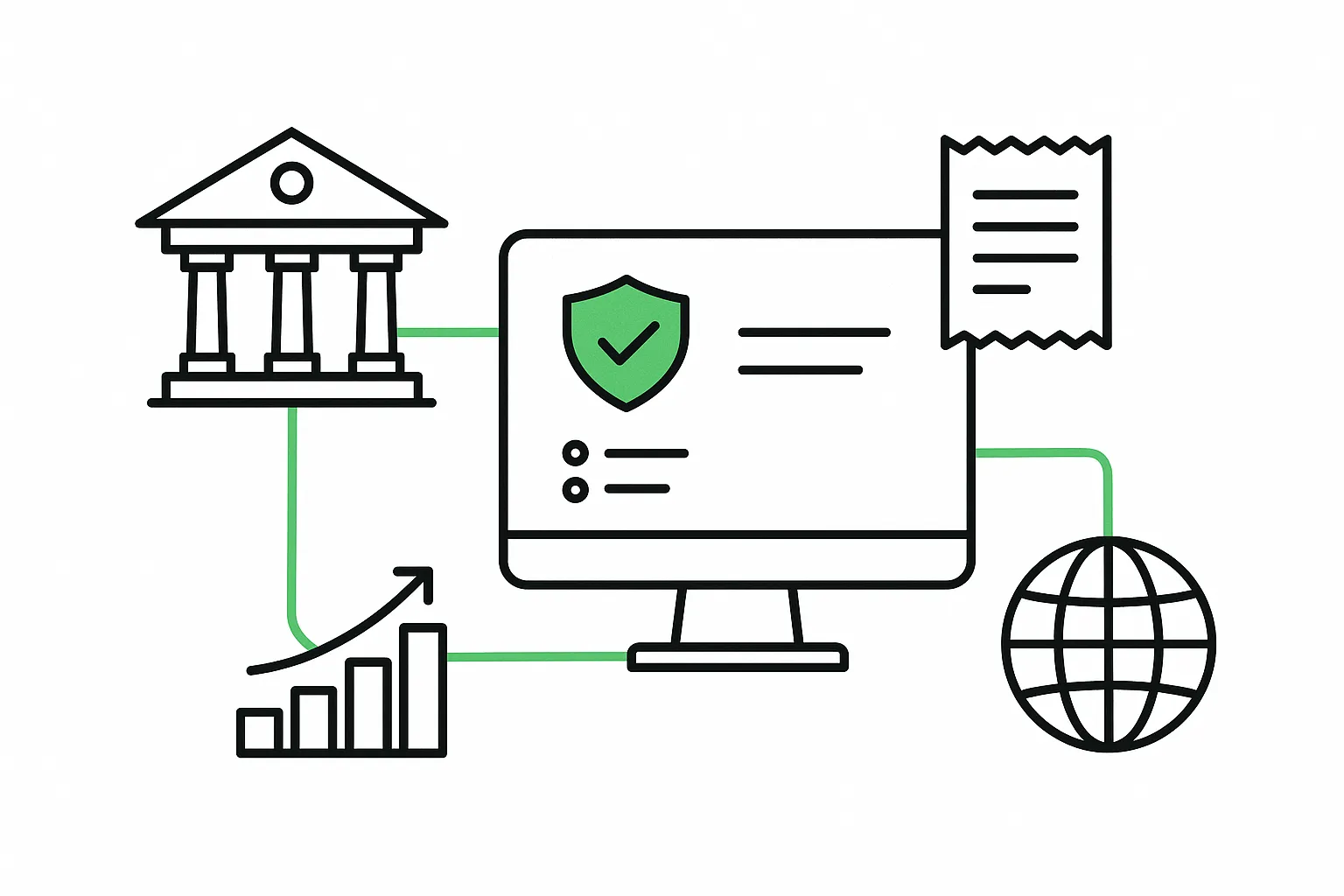From the outside, building an e-commerce platform or launching a fintech app looks like a race for innovation and growth. But if you’ve ever tried to move money in and out of a high-risk industry—or simply tried to establish a solid payment infrastructure in Europe—you already know it’s a lot more complicated than it seems.
While product development, marketing, and user acquisition steal the spotlight, the ability to handle payments reliably is what determines whether a business can scale, survive, or collapse under compliance pressure.
So how can entrepreneurs and finance teams build a payment infrastructure that’s compliant, robust, and actually works for their business model?
Let’s break it down.
The Hidden Fragility of Payment Infrastructure
Most businesses don’t think much about payment systems until they stop working. Suddenly, you’re dealing with blocked accounts, held funds, failed settlements, or worse—shut out of the banking system entirely because your business model is deemed “too risky.”
Sectors like e-commerce, affiliate marketing, crypto, or egaming know this pain all too well. Traditional banks don’t just move slowly—they often don’t understand your business at all. The result? Account rejections, endless compliance reviews, and surprise closures.
This fragility is usually due to three factors:
-
Over-reliance on a single banking partner
-
Inflexible compliance frameworks not adapted to your sector
-
Lack of integration between payment processing, reporting, and business operations
A strong payment infrastructure mitigates all of this. It doesn’t just move money—it supports your business’s growth, helps you stay compliant, and reduces risk at every level.
Core Components of a Reliable Payment Infrastructure
Let’s explore what makes a payment infrastructure not only functional, but strategic:
1. A Clear Separation Between Operations and Reserves
Many companies mix operational funds (used for payroll, marketing, and suppliers) with customer or transactional flows. This increases exposure if your main account is frozen. A good infrastructure separates these, with clear documentation to satisfy compliance checks.
2. Flexible Compliance Onboarding
If your payment provider requires the same compliance process as a traditional bank—lengthy, bureaucratic, and blind to industry nuance—it’s time to reconsider. The best solutions tailor onboarding based on risk profile, jurisdiction, and use case, speeding up access without cutting corners.
3. Real-Time Monitoring and Reporting
Whether you’re managing crypto assets, affiliate payouts, or cross-border B2B transactions, you need visibility. Instant transaction records, downloadable statements, and smart alerts help you stay audit-ready and compliant with regulations.
4. SEPA Access Without SWIFT Dependency
If you’re operating in Europe and relying on SWIFT, you’re overpaying and waiting too long. SEPA transfers offer a faster, cheaper, and more localised way to operate. A EURO IBAN account that works across the EU can change your cost structure entirely.
Avoiding Common Pitfalls: What Not to Do
Here’s what can break your infrastructure fast:
-
Using personal accounts for business — Major red flag for regulators.
-
Ignoring KYC and transaction limits — Leads to holds, rejections, and penalties.
-
Not planning for volume — Systems that work at €10K/month often break at €1M/month.
-
Partnering with the wrong PSP (Payment Service Provider) — A flashy UI doesn’t make up for weak banking rails or opaque fees.
Let’s take an example: a mid-size e-commerce business launched across five EU countries. They rely on a third-party PSP, have a single business account with a traditional bank, and use Stripe for checkout. When Stripe freezes funds due to chargeback spikes and the bank questions their merchant profile, operations grind to a halt. Why? No redundancy, no specialized banking partner, no anticipation of compliance red flags.
Future-Proofing Your Finances with Open Banking
Open banking allows businesses to connect banking, accounting, and reporting tools through secure APIs. That means faster settlements, real-time reconciliations, and smarter cash flow decisions.
For fintechs and high-risk businesses, this offers a huge advantage: you’re not locked into legacy systems. You can integrate directly with modern banking partners that offer tailored features—like virtual IBANs, automated compliance workflows, and seamless API access.
How Monetum Fits In
At Monetum, we’ve designed our EURO IBAN accounts specifically to support modern businesses operating in fast-moving sectors. We’re not a traditional bank—and that’s the point. We’re open-minded and flexible, without compromising on compliance or security.
We help businesses:
- Set up EURO IBAN accounts quickly, through a streamlined onboarding experience with dedicated support
- Operate across Europe using SEPA-native infrastructure, ensuring smooth and borderless euro payments
- Accept client payments through C2B open banking, bypassing outdated card networks for faster settlement
- Simplify operations with batch payment tools, ideal for handling high-volume payouts effortlessly
- Gain clarity and control through dedicated IBANs, improving cash flow tracking and reconciliation
- Automate financial operations via API integration, reducing errors and scaling effortlessly with your platform
- Empower your team with multi-user account roles, enhancing security and operational oversight
Whether you’re scaling your fintech app or running a growing e-commerce operation, your payment setup shouldn’t be the thing that holds you back.
Final Thoughts: Make Your Payment Infrastructure an Asset
Your financial architecture isn’t just a backend concern—it’s a strategic pillar. Treat it with the same attention you give to growth, product, and marketing. That means choosing partners who understand your needs, planning for scale, and designing systems that flex with your business.
And when you’re ready to upgrade that infrastructure? Open your Business Account Today.

